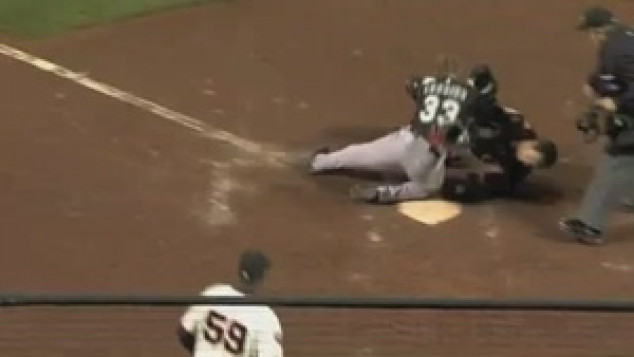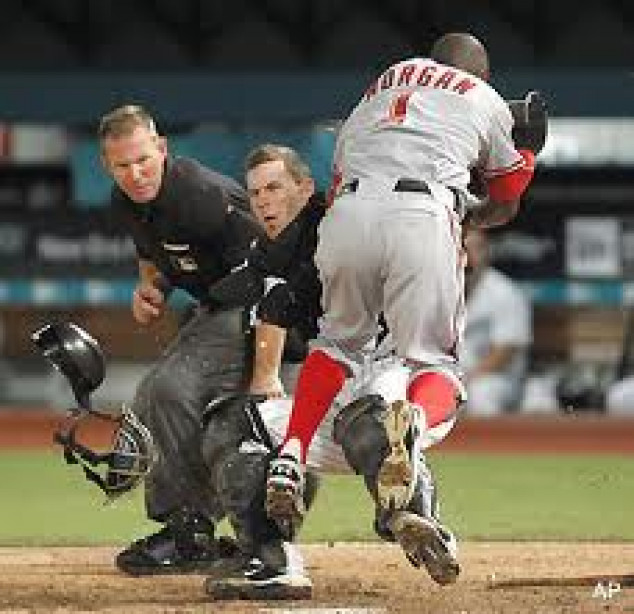Play at the Plate
 One of the most exciting plays in America’s national pastime is the close play collisions at home plate.
One of the most exciting plays in America’s national pastime is the close play collisions at home plate.
Baseball has always been one of the more slow and steady games. Rarely ever is there action like that of football and basketball. Home plate collisions give fans a little bit of action relief to sometimes get them on their feet, it also gives major injuries to baseball’s major stars.
Catcher Buster Posey of the San Francisco Giants, the National League’s rookie of the year in 2010, suffered a season-ending leg fracture and torn ligaments in May of 2011 when Florida’s Scott Cousins barreled into him at home plate in the 12th inning of the Marlins-Giants game.
This, along with many other dangerous home plate collisions throughout baseball history have sparked a recurring debate about whether home plate collisions should be banned. This could be done by prohibiting the catcher from blocking the plate and by prohibiting the runner from making intentional contact with the catcher (basically the same rules that apply on every other base other than home plate).
Former major league catcher Mike Matheny, whose career ended by concussions because of his own collisions at home plate, said the hit that knocked out the Giants’ Buster Posey for the rest of the season could have easily been avoided.
“You know what, it wasn’t a dirty play, he didn’t come high spikes, he didn’t come high elbow,” Mathey said according to CBSSports.com “But it wasn’t a necessary play. He was hunting. Buster gave him an option and he didn’t take it.”
Matheny, who won four Gold Gloves, isn’t in favor of rules changes to protect catchers and believes hard contact plays at the plate are just part of the game
A lot of old-school, old-rules people think there shouldn’t be a change in the rules and that the game is how it is and shouldn’t be changed. This is the main reason of why the collisions at home plate may always be a part of the game.






